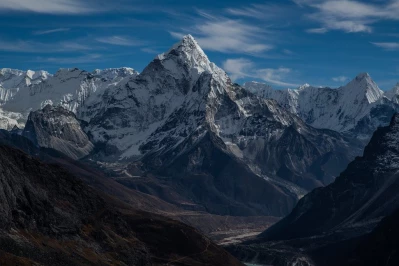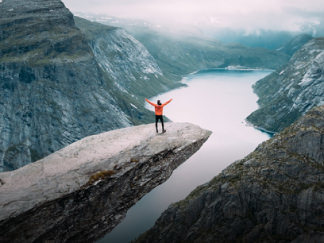
Tips to Prepare Food and Hydration for Perfect Trekking and Hiking Tours
- 1. Fueling Your Adventure: The Importance of Food and Hydration
- 2. Trekking: The Art of Packing Light and Eating Big
- 3. Day Hiking: Enjoying the Freshness of Nature's Bounty
- 4. Essential Tips for Successful Food and Hydration Management
- 5. Beyond the Essentials: Additional Considerations
The call of the wild beckons, and you're gearing up for your next adventure. Whether you're drawn to the immersive experience of a multi-day trekking tour or the invigorating challenge of a day hike, proper preparation is key. And at the heart of preparation lies a crucial element: food and hydration.
Just like the fuel that propels your car, the food you consume and the water you drink are essential for powering your outdoor adventures on hiking tours. But the planning considerations for these two activities differ. This guide delves into the essential differences between food and hydration strategies for trekking and day hiking.
1. Fueling Your Adventure: The Importance of Food and Hydration
Imagine yourself conquering a mountain peak, the breathtaking panorama laid out before you. Or picture yourself traversing a lush forest trail, surrounded by the symphony of nature. Both scenarios require sustained energy and optimal performance. This is where food and hydration come in.
Food provides the necessary calories to fuel your body throughout your trek or hike. It keeps your energy levels up, allowing you to push through challenging sections and fully appreciate the experience.
Water, on the other hand, is vital for regulating your body temperature, preventing dehydration, and ensuring proper functioning of your organs. Dehydration can lead to fatigue, headaches, and even altitude sickness for trekkers venturing to higher elevations.
By planning your meals and hydration strategy based on the specific activity (trek vs. hike), you're setting yourself up for a safe and enjoyable adventure.
2. Trekking: The Art of Packing Light and Eating Big
Ah, the multi-day trek. It's an experience that allows you to truly immerse yourself in nature's embrace. But with limited space in your backpack, food planning becomes an art form. Here's where the concept of "backpacking meals" takes center stage.
Backpacking meals are specifically designed for trekkers, prioritizing three key characteristics:
Lightweight: Every ounce counts when you're carrying your supplies on your back for days. Backpacking meals are often dehydrated or freeze-dried, significantly reducing their weight compared to fresh food.
High-Calorie: Trekking burns a lot of calories. Backpacking meals pack a powerful punch, providing the energy you need to keep going.
Easy to Prepare: After a long day on the trail, the last thing you want to do is spend hours preparing a complicated meal. Backpacking meals are typically designed for quick and easy preparation, often requiring just hot water.
There are two main types of backpacking meals:
Pre-packaged meals: These are convenient and require minimal preparation. Popular brands offer a wide variety of flavors and dietary options.
Dehydrated meals you cook yourself: This option allows for more customization and can be more budget-friendly. Think dehydrated vegetables, grains like couscous or quinoa, and protein sources like lentils or pre-cooked chicken. You'll need to bring a small camp stove and cooking pot to prepare these meals.
For experienced trekkers, building your own meals from scratch using lightweight ingredients like dehydrated vegetables, grains, and protein sources is another option. This requires more planning but offers the most control over your dietary needs.
Don't forget about snacks! Packing high-energy, bite-sized snacks like nuts, granola bars, or energy gels provides a quick boost throughout the day. Be mindful of the sugar content in some energy gels, especially if you're prone to blood sugar crashes.
Hydration is equally important for trekkers. Choose a reliable hydration reservoir that fits comfortably in your backpack. Water purification methods like filtration tablets or purification drops are essential for ensuring safe drinking water on the trail. Additionally, consider electrolyte tablets or drinks to replenish electrolytes lost through sweat, especially on hot days.
3. Day Hiking: Enjoying the Freshness of Nature's Bounty
Day hikes on hiking tours offer a fantastic way to connect with nature without the multi-day commitment. This translates to more flexibility in your food planning.
Unlike trekkers, day hikers on hiking tours aren't limited by weight restrictions. This opens the door to a wider variety of food options. Pack a variety of fresh, high-energy foods like sandwiches on whole-wheat bread, wraps with protein and vegetables, fruits like apples or bananas, and vegetables like baby carrots or sugar snap peas.

Similar to trekking, incorporating snacks like nuts, granola bars, or trail mix is a great way to maintain energy levels throughout your day on a hiking tour.
For day hikes on hiking tours, a reusable water bottle is your best friend. Fill it up with clean water before you head out and refill it throughout the day, especially at rest stops.
4. Essential Tips for Successful Food and Hydration Management
Now that we've explored the specific considerations for each activity, let's delve into some general tips for successful food and hydration management:
Planning is Key: This is the golden rule. Plan your meals and snacks based on the duration and difficulty of your hike or trek. Consider factors like the terrain, elevation gain, and weather conditions.
Portion Control: It's tempting to overpack food, especially for trekkers worried about running out. However, carrying unnecessary weight can slow you down. Research average calorie expenditure for your activity level and pack accordingly.
Dietary Needs: Whether you're vegetarian, gluten-free, or have other dietary restrictions, pack meals and snacks that cater to your needs. Many backpacking food companies offer vegetarian and gluten-free options, and you can always build your own meals with these restrictions in mind.
Waste Management: Leave No Trace principles are essential for all outdoor activities. Pack out all your food waste, including wrappers and packaging. Utilize reusable containers and bags whenever possible.
Discover more: Differences Between Trekking And Hiking? Which One is Right for You?
5. Beyond the Essentials: Additional Considerations
While we've covered the core principles, here are some additional factors to consider when planning your food and hydration strategy:
Weather Conditions: Hot weather increases your need for hydration. Pack additional water or electrolyte drinks for hot days. On the other hand, colder weather might require less water but more high-calorie snacks to maintain energy levels.
Altitude: Altitude significantly increases your water needs. Aim for at least 1 liter of water per hour for every 1,000 meters (3,300 feet) of elevation gain.
Cultural Aspects: If you're trekking in a foreign country, be mindful of local dietary restrictions or customs. Research and plan your meals accordingly.
By understanding the differences between food and hydration strategies for trekking and day hikes on hiking tours, you're well on your way to a successful and enjoyable outdoor adventure. Remember to prioritize lightweight, high-calorie options for treks and leverage the flexibility of fresh food choices for day hikes. Most importantly, plan your meals and snacks based on your specific activity and needs.
With proper preparation and the right fuel in your backpack, you'll be ready to conquer any trail and embrace the invigorating experience nature has to offer on your next hiking tour with Adventure Asia. Plan your journey today and make memories that last a lifetime!
- 1. Fueling Your Adventure: The Importance of Food and Hydration
- 2. Trekking: The Art of Packing Light and Eating Big
- 3. Day Hiking: Enjoying the Freshness of Nature's Bounty
- 4. Essential Tips for Successful Food and Hydration Management
- 5. Beyond the Essentials: Additional Considerations





















